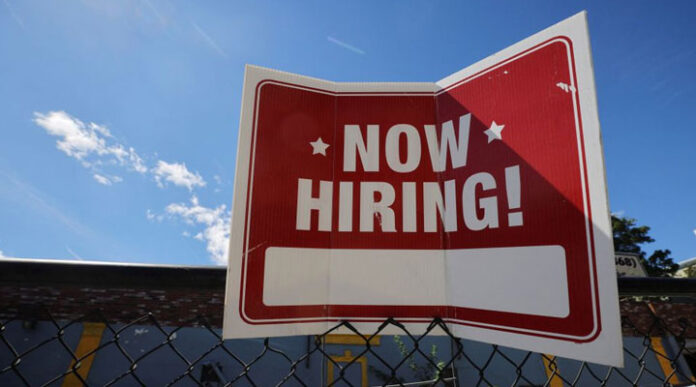Nonfarm payrolls increased 315,000 in August, while the unemployment rate increased to 3.7% from 3.5% in July. Average hourly earnings increase by 0.3%; they are up 5.2% year on year. The average workweek has decreased from 34.6 hours to 34.5 hours.
Employers in the United States hired more workers than expected in August, but moderate wage growth and an increase in the unemployment rate to 3.7% may relieve pressure on the Federal Reserve to deliver a third 75 basis point interest rate hike this month.
On Friday, the Labor Department’s closely watched employment report revealed a decrease in the average workweek. The increase in the unemployment rate occurred as more than 700,000 people entered the labor force, pushing the labor force size to a record high. The overall strength of the labor market demonstrates the economy’s resilience, despite the Federal Reserve’s front-loading of rate hikes, which has increased the risk of a recession.
Fed Chair Jerome Powell warned Americans last week of a painful period of slow economic growth and possibly rising unemployment as the central bank tightens monetary policy aggressively to combat inflation.
“This gradual cooling of the overheated labor market may be exactly what the US economy needs to help ease inflation pressure,” said Eric Merlis, managing director and co-head of global markets at Citizens. “The increased labor force participation rate and one-tenth drop in hourly earnings should encourage the Fed.”
According to the establishment survey, nonfarm payrolls increased by 315,000 jobs last month. Data for July were revised slightly lower, with payrolls increasing by 526,000 rather than 528,000 as previously reported.
August was the 20th consecutive month of job growth. Employment is now 240,000 jobs higher than it was before the pandemic.
Reuters polled economists, who predicted a 300,000 increase in payrolls, with estimates ranging from 75,000 to 450,000.
The professional and business services industry added 68,000 jobs last month, driving the overall increase in hiring. 48,000 new jobs were added to the healthcare payroll.
Retail trade employment increased by 44,000 while manufacturing employment increased by 22,000 positions. Payrolls in the leisure and hospitality industries increased by 31,000, slowing from an average of 90,000 per month in the first seven months of the year.
The leisure and hospitality industry employs 1.2 million fewer people than it did before the pandemic.
US stocks began the day higher. The US currency fell against a basket of currencies. Treasury prices in the United States were mixed.
IMPORTANT HOUSEHOLD DETAILS
The details of the household survey, from which the unemployment rate is calculated, were impressive. While the unemployment rate rose to 3.7% from a pre-pandemic low of 3.5% in July, this was due to an increase in labor force participation of 786,000 people. The largest increase since January returned the workforce to a record level, surpassing the previous high in December 2019.
As a result, the labor force participation rate, or the proportion of working-age Americans who have or are looking for work, rose to 62.4% in August from 62.1% in July. It is still one percentage point lower than it was before the pandemic.
In June and July, the Fed raised its policy rate by three-quarters of a percentage point each time. It has raised that rate from near zero to its current range of 2.25% to 2.50% since March. According to CME’s FedWatch Tool, financial markets are pricing in a roughly 64% chance of a 75 basis point increase at the Fed’s September 20-21 policy meeting.
The August consumer price data, which is due mid-month, will also play a significant role in determining the size of the next rate hike.
Despite rising recessionary risks, the labor market continues to forge ahead on its own. On the last day of July, there were 11.2 million job openings, with two openings for every unemployed person. By historical standards, the number of first-time applications for unemployment benefits is very low.
Wage growth is slowing as the labor pool expands.
After increasing by 0.5% in July, average hourly earnings increased by 0.3% in August. In August, the annual wage increase remained at 5.2%. Strong wage growth is keeping the income side of the economic growth ledger expanding, albeit at a slower pace, and a recession at bay for the time being.
The average hourly wage fell to 34.5 hours in August, down from 34.6 hours in July. That could be an indication that businesses are beginning to reduce employee hours due to economic uncertainty.





